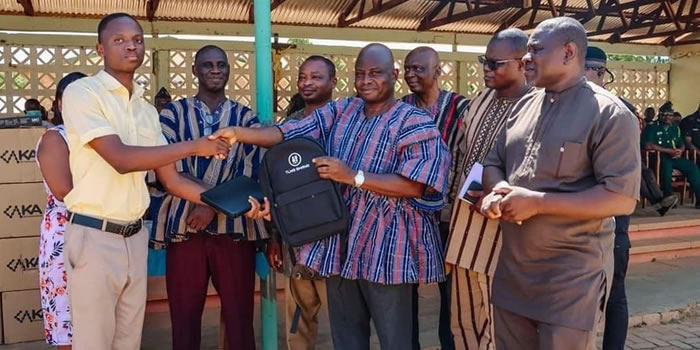

Location and Size
Location
The District is one of the twelve Districts that make up the Upper West Region. It lies in the north western corner of the Upper West Region in Ghana between Long. 2°25 W and 2°45W and Lat. 10°20 and 11°00. It is bounded to the East and South by the Lambussie and Jirapa Districts and to the North and West by the Republic of Burkina Faso.
Size
The total area of the District is put at 1,051.2 square km. This constitutes about 5.7% of the Region’s total land area, which is estimated at 18,476 square km (figure 1 shows the District in the Regional context). The District is estimated to have 157 communities with 95% of the inhabitants in the rural areas. The population density is about 89 per square kilometer. It is the most densely populated District in the region.
Topography and Drainage
The District is gently rolling with a few hills ranging between 180 and 300M above sea level. It is drained by the main river – the Black Volta, to the west making a boundary between the District and the Republic of Burkina Faso. The Black Volta has several tributaries in the District; notable amongst them are the Kamba/Dangbang, and Kokoligu-baa. These if utilized, could offer an agro-based employment for the youth who migrate to the south in search of non-existing jobs during the dry season.
Climate and Vegetation
Vegetation
The District lies within the Guinea Savannah Zone which is characterized by short grasses and few woody plants. Common trees in the District consist of drought and fire resistant trees such as baobab, dawadawa, Shea trees and acacia. The vegetation is very congenial for livestock production, which contributes significantly to household incomes in the District.
The greatest influence on the vegetation is the prolonged dry season. During this period, the grass becomes dry and the subsequent bush burning leaves the area patchy and mostly bare of vegetation. Consequently, the torrential early rains cause soil erosion. Bush burning reduces the vegetative cover and transpiration and this affects average annual rainfall totals resulting in low agricultural yields as farmers depend mostly on rain fed agriculture.
Climate
The climate of the District is the tropical continental type with the mean annual temperature ranging between 27°C to 36°C. The period between February and April is the hottest. Climatic changes of late, however affects the weather pattern. Between April and October, the Tropical Maritime air mass blows over the area which gives the only wet season in the year. The rainfall pattern leads to the migration of the youth, a factor associated with the underdevelopment of the human resource base of the District.
Geology and Soil
Geology
The rock formation in the District is essentially birimian with dotted outcrops of granite. The District mineral potential is largely unexplored. Some reconnaissance work indicates the presence of minor occurrences of manganese, traces of gold and diamond, Iron ore and clay.
As a result of a well- developed fracture pattern in the rocks, the potential for obtaining ground water in the District is very high which makes it suitable for all year farming. Borehole drilling activities in the early 1980s confirmed the presence of the granite and birimian rocks in the District.
Date Created : 11/29/2017 7:47:05 AM









 facebook
facebook
 twitter
twitter
 Youtube
Youtube
 +233 593 831 280
+233 593 831 280 0800 430 430
0800 430 430 GPS: GE-231-4383
GPS: GE-231-4383 info@ghanadistricts.com
info@ghanadistricts.com Box GP1044, Accra, Ghana
Box GP1044, Accra, Ghana